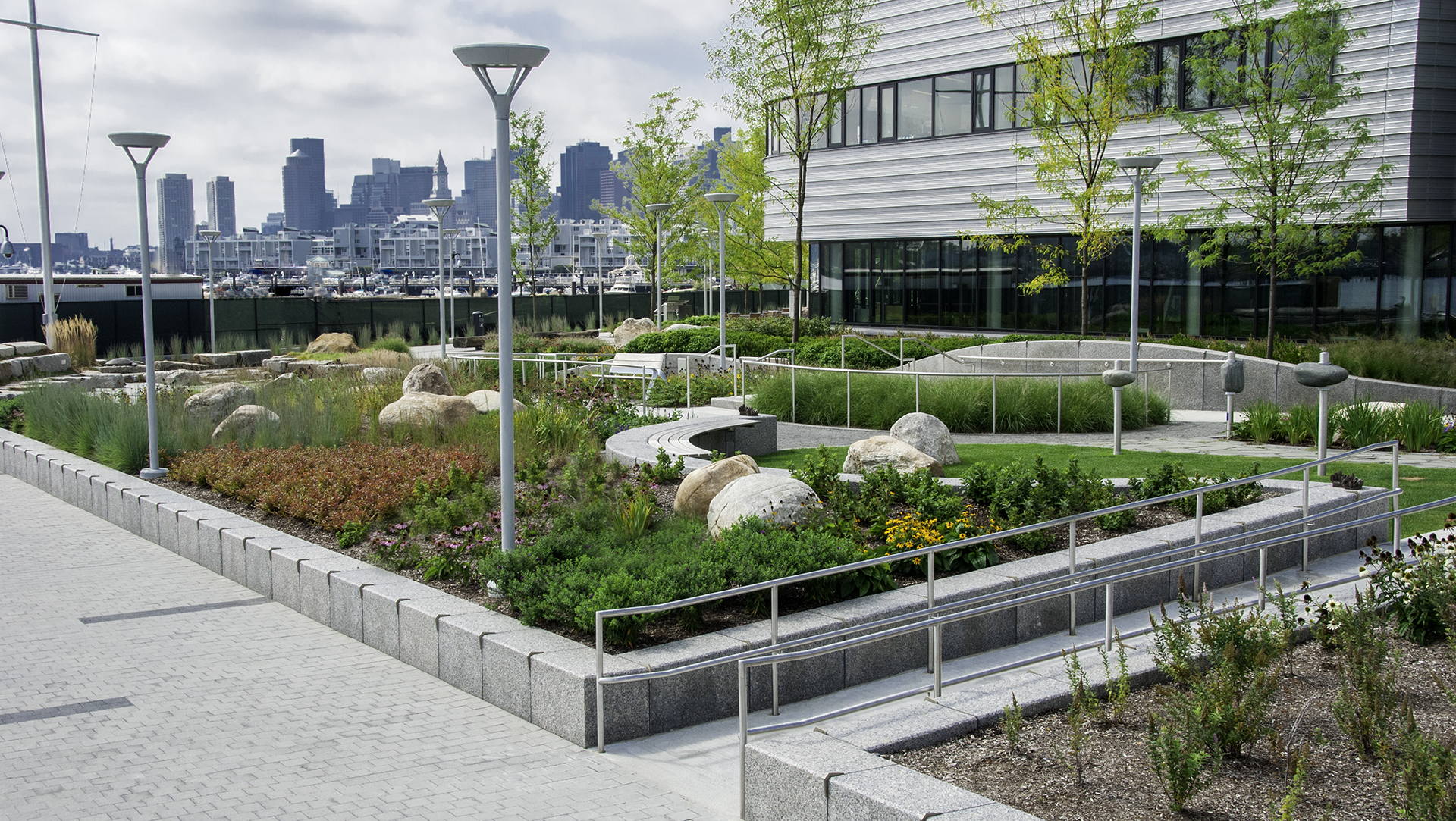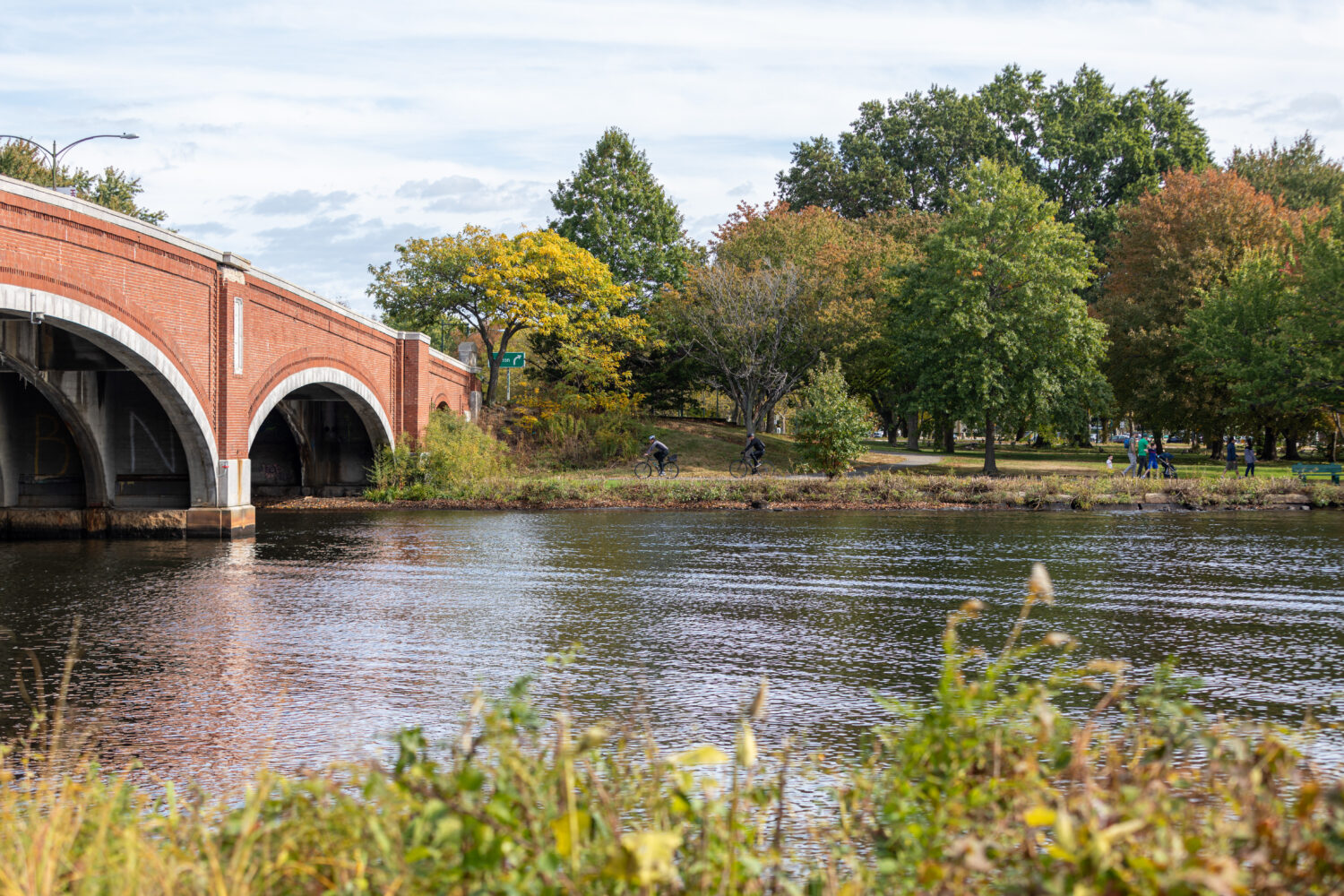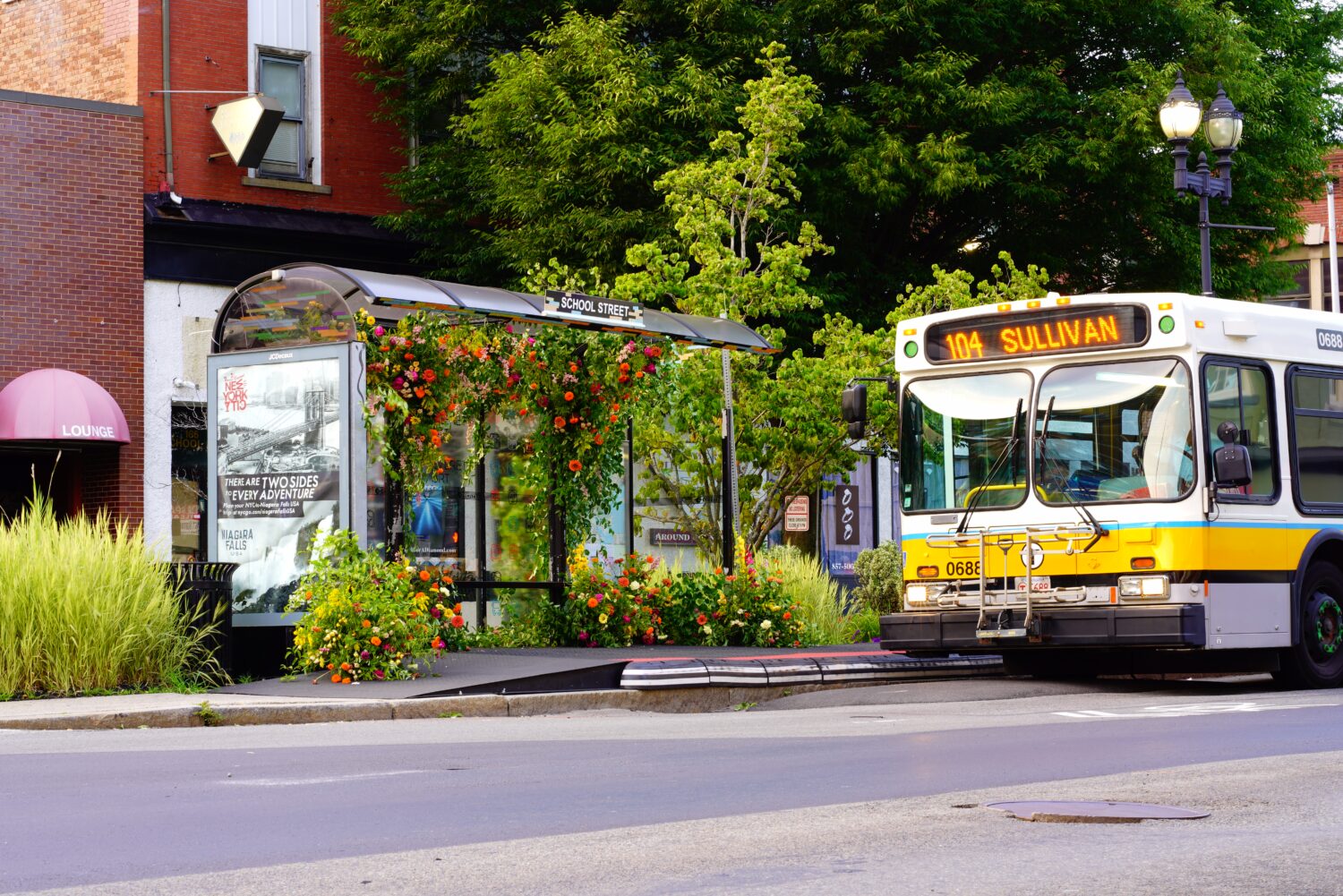Pictured above: Spaulding Rehabilitation Hospital’s waterfront landscaping beautifully integrates historic granite storm surge barriers, elevated therapy trails and a park for area residents.
As critical service providers and the largest employers in metro Boston and statewide, the health care sector is uniquely positioned to support the health and resilience of our communities in a world facing increasing climate disruption.But recent extreme weather events have exposed the frailty and deep interdependence of our infrastructure systems, and proven health facilities must take care of themselves AND act as anchor institutions to sustain their communities.
In an earlier blog, we explored some of the ways climate change is impacting the health care sector, and smart actions leading hospitals are taking to limit their vulnerability. This second part looks beyond how hospitals can protect themselves to the important leadership roles they can play in broader community efforts. It summarizes key findings from a recent summit and report, “Resilience 2.0: Health Care’s Role in Anchoring Community Health and Resilience,” by Health Care Without Harm, with sponsorship support from the Barr Foundation and co-hosted by HCWH and Partners HealthCare.
The Resilience 2.0 Summit and report engaged over 110 leaders from metro Boston hospitals, municipalities, utilities, state and federal agencies in asking, “How can we re-imagine how we fulfill our missions to address climate’s threats? How can we anchor community level prevention and resilience?” Participants:
- Shared the latest thinking on climate change impacts on health care facilities and our region’s infrastructure
- Updated each other on the region’s many interconnected climate resiliency initiatives
- Created a network of organizations and champions who recognize each other, know what each other is doing, and can explore how best to provide mutual, complementary support
- Recommended critical next steps
- Raised many difficult strategic questions, and sparked pilot projects to test solutions.
Figure 1:

The central question throughout the summit was, “What is health care’s role in anchoring community/public health and resilience, especially for socially vulnerable populations, which are usually disproportionately harmed by severe weather?” By collaborating with neighborhoods to strengthen support for children, elders, those with medical illness, people of color, and others—as mapped for Boston in Figure 1—we can help to significantly improve both quality of life and climate resilience. Both the Summit and the report led to top recommendations that read like “doctor’s orders” for health systems that recognize the climate challenge and are ready to lead. These include:
Consider the social determinants of health as critical to community resilience, including a broader definition of health and health care – not just clinical “sick care.” Partner with community organizations and others to better understand health needs of various populations to support community-driven healthy lifestyles and stronger social cohesion in preparation for emergencies. This is important to building communities’ physiological and psychological health and resilience, and should be in concert with neighborhood redevelopment and quality of life enhancements.
Be mindful of the way flood barriers can make a hospital a fortress and separate it from surrounding neighborhoods during extreme events; efforts should protect the facility and community, not separate them.
Ensure ambulatory facilities reopen quickly to anchor distressed and damaged communities. They can be places to shelter, charge phones, get information, and provide other “safe haven” services.
Create robust networks of partnerships to anchor community health & resilience.
Broaden engagement in climate-smart public policy, at facility, city-wide and state levels.
Develop a compelling business case for health care resilience. You can read the result, Safe haven in the storm, featured in Part One of this blog.
Explore innovative solutions to resilient power generation for hospitals, community health providers, and neighborhoods.
We invite others to join us in taking our caregivers’ advice.






